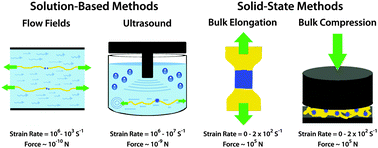Methods for activating and characterizing mechanically responsive polymers
Abstract
Mechanically responsive

- This article is part of the themed collection: Stimuli responsive materials
* Corresponding authors
a
Department of Chemistry and Biochemistry, The University of Texas at Austin, Austin, USA
E-mail:
bielawski@cm.utexas.edu
b World Class University (WCU) Program of Chemical Convergence for Energy & Environment (C2E2), School of Chemical and Biological Engineering, Seoul National University, Seoul 151-742, Korea
Mechanically responsive

 Please wait while we load your content...
Something went wrong. Try again?
Please wait while we load your content...
Something went wrong. Try again?
K. M. Wiggins, J. N. Brantley and C. W. Bielawski, Chem. Soc. Rev., 2013, 42, 7130 DOI: 10.1039/C3CS35493H
To request permission to reproduce material from this article, please go to the Copyright Clearance Center request page.
If you are an author contributing to an RSC publication, you do not need to request permission provided correct acknowledgement is given.
If you are the author of this article, you do not need to request permission to reproduce figures and diagrams provided correct acknowledgement is given. If you want to reproduce the whole article in a third-party publication (excluding your thesis/dissertation for which permission is not required) please go to the Copyright Clearance Center request page.
Read more about how to correctly acknowledge RSC content.
 Fetching data from CrossRef.
Fetching data from CrossRef.
This may take some time to load.
Loading related content
